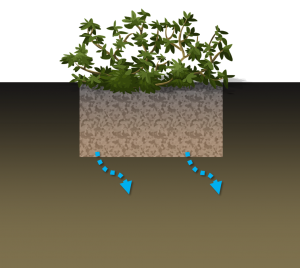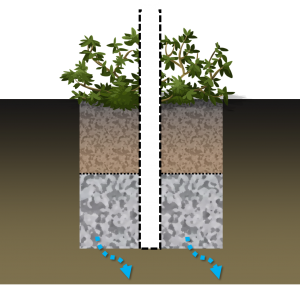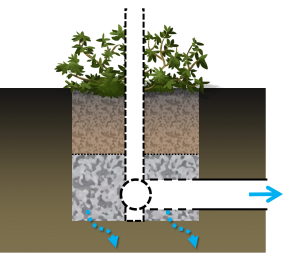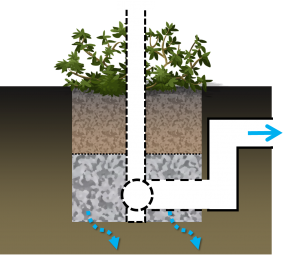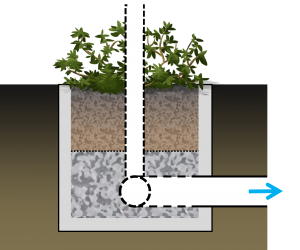Difference between revisions of "Bioretention: Variations"
Jump to navigation
Jump to search
Jenny Hill (talk | contribs) |
Jenny Hill (talk | contribs) |
||
| Line 11: | Line 11: | ||
|- | |- | ||
![[Rain gardens]] | ![[Rain gardens]] | ||
| − | | | + | |/-||-||-||These are the simplest construction, often used by residents or community groups. Volume reduction is through infiltration and evapotranspiration.||[[File:Rain Garden Schematic.png|thumb]] |
|- | |- | ||
![[Bioretention: Full infiltration|Infiltrating bioretention]] | ![[Bioretention: Full infiltration|Infiltrating bioretention]] | ||
Revision as of 01:43, 12 August 2017
| Type | Gravel layer | Underdrain | Liner | Mechanisms | Schematic |
|---|---|---|---|---|---|
| Rain gardens | /- | - | - | These are the simplest construction, often used by residents or community groups. Volume reduction is through infiltration and evapotranspiration. | |
| Infiltrating bioretention | yes | - | - | This is a highly desirable type of bioretention where the soils permit infiltration at a great enough rate to empty the facility between storm events. Volume reduction is primarily through infiltration to the underlying soils, with some evapotranspiration. As there is no outflow from this BMP, it is particularly useful in areas where nutrient management is a concern to the watershed. | |
| Partially infiltrating bioretention | yes | yes | - | Including an underdrain in the gravel storage layer help to empty the facility between storm events, even over ‘tight soils’. The drain discharges to a downstream point, which could be an underground infiltration facility. Limited volume reduction is gained through infiltration and evapotranspiration. | |
| Bioretention with storage | yes | yes | - | By raising the outlet of the discharge pipe the bottom portion of the BMP can only drain through infiltration. This creates a fluctuating anaerobic/aerobic environment which promotes denitrification. Increasing the period of storage has benefits for promoting infiltration, but also improves water quality for catchments impacted with nitrates. A complimentary technique is to use fresh wood mulch, which also fosters denitrifying biological processes. | |
| Bioretention planters (non-infiltrating) | yes | yes | yes | This type may be required over contamination hot-spots or in very dense urban areas with a lot of other underground infrastructure. The design includes an impermeable base and sides, so that volume reduction is made only through evapotranspiration. This type of cell can be constructed above grade in any waterproof and structurally sound container, e.g. in cast concrete or a metal tank. Syn: Stormwater planters, Biofilters. |
